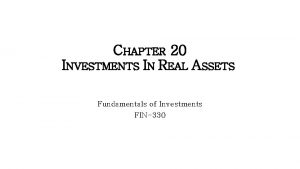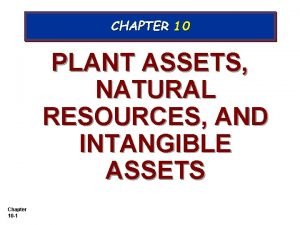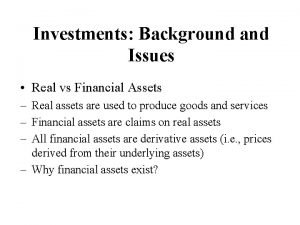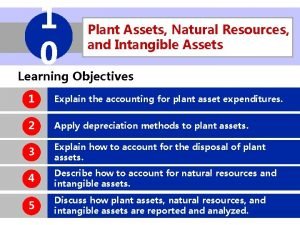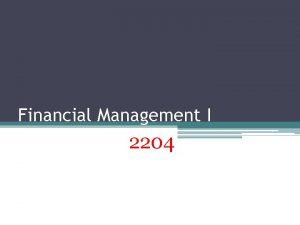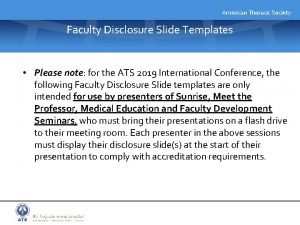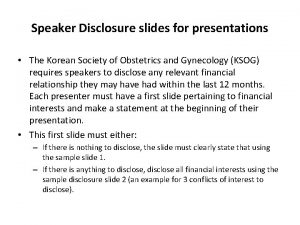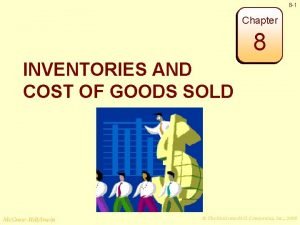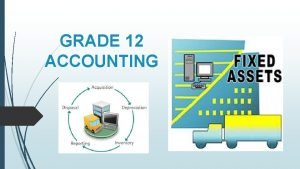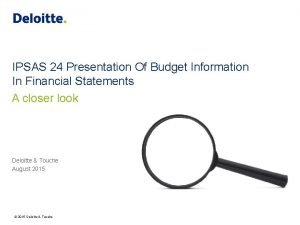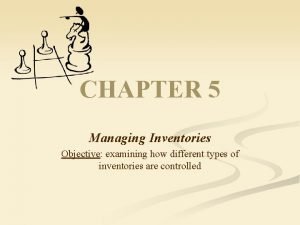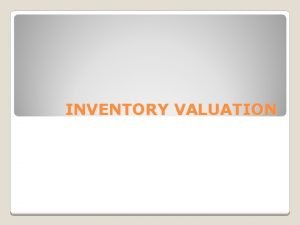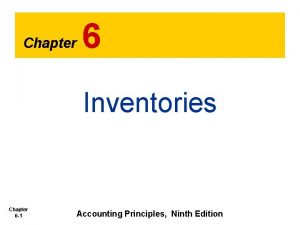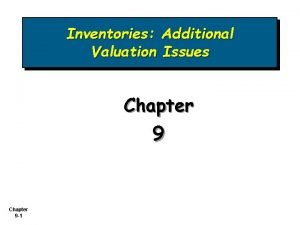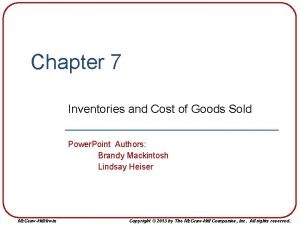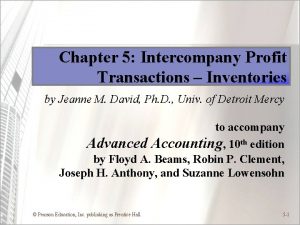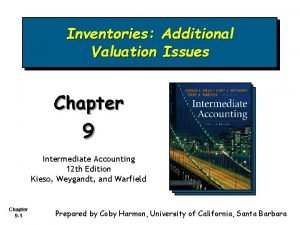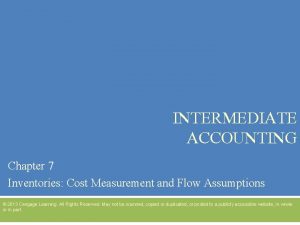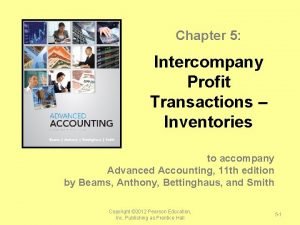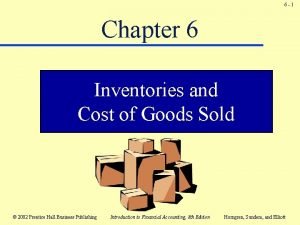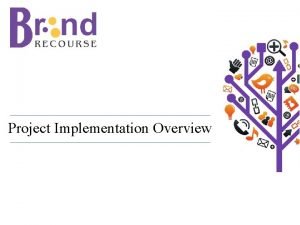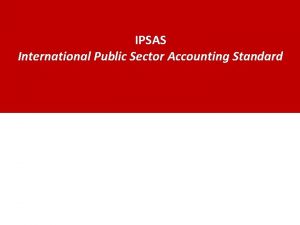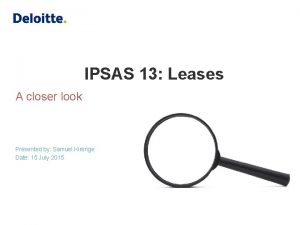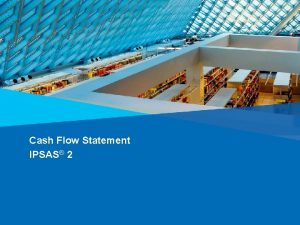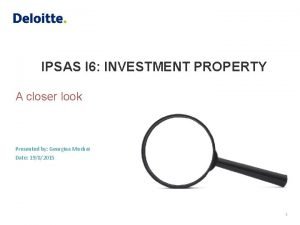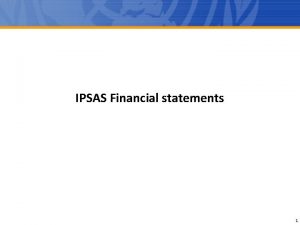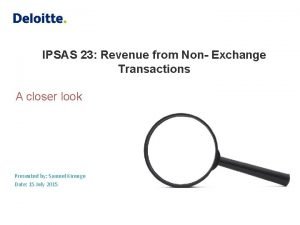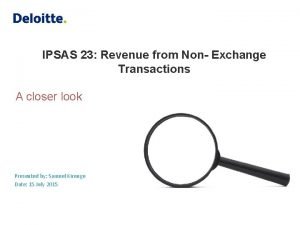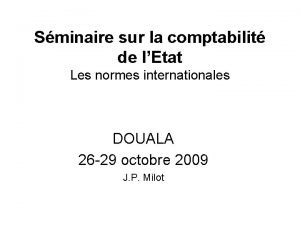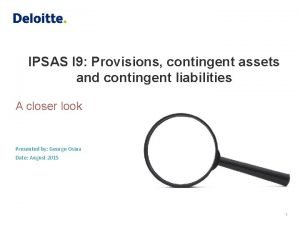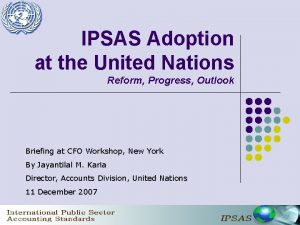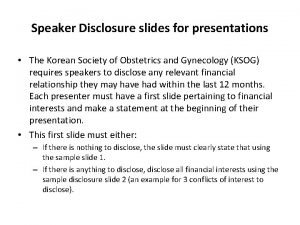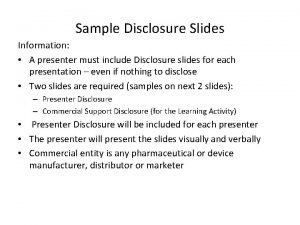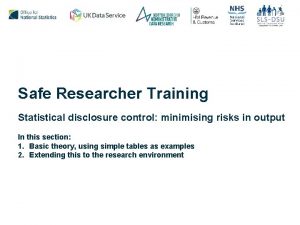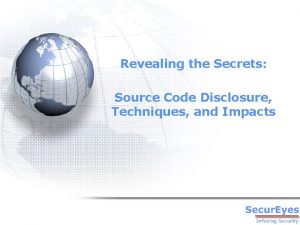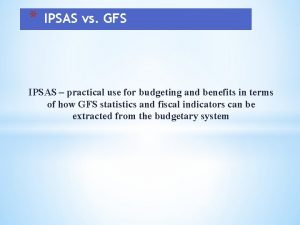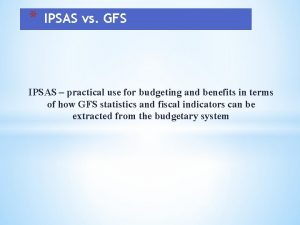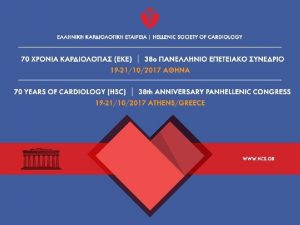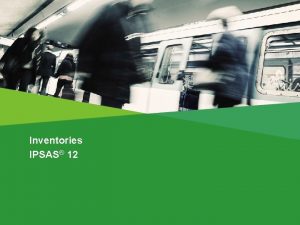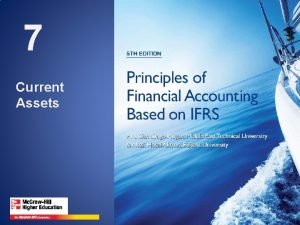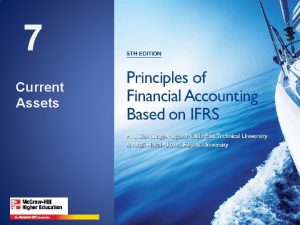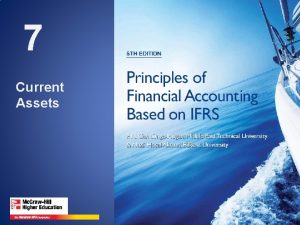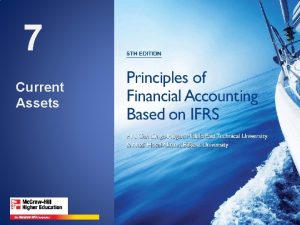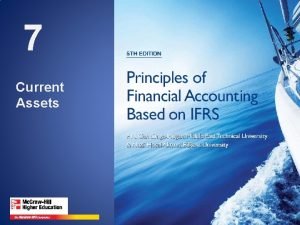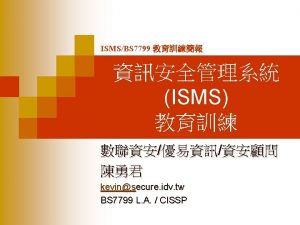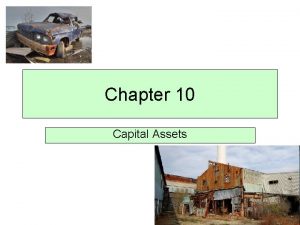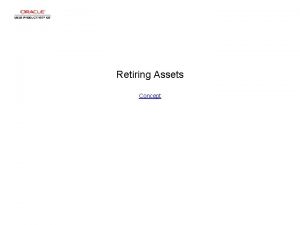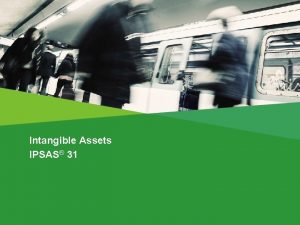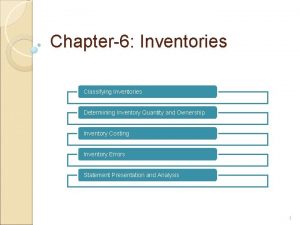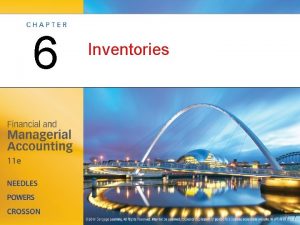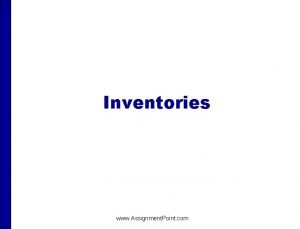IPSAS Implementation Assets and Inventories Presentation and Disclosure














































- Slides: 46

IPSAS Implementation : Assets and Inventories (Presentation and Disclosure Requirements) By M. Olumuyiwa Agbefeyitimi (Bsc, MBA, ACA) ©January 2017 15/4/1442 1

Course Outline Ø Why IPSAS? Ø Historical background Of IPSAS Ø Primary Objective Ø IPSAS 12 – Inventories Ø IPSAS 17 - P P E Ø Definition of Terms Ø Applicable Standards Ø Accounting Documentation Ø Disclosure Requirements 15/4/1442 2

HISTORICAL BACKGROUND OF IPSAS – International Public sector Accounting Standard. This is the standards guiding the preparation of financial statements for Public sector organisations. Examples of Public Sector Organs: Ø Ministries : - Lagos State ministry of Education, National Board for technical Education Ø Agencies : - Lagos Internal Revenue Service Lagos State Polytechnic Lagos State University etc 15/4/1442 3

Historical background IFRS Accrual Method IPSAS Accrual Method Private Sector Public Sector What about certain Government Business Enterprises ? Government’s profit oriented organizations financial report are IFRS based. 15/4/1442 4

IPSAS by the IPSAB The primary objective of the IPSAS is: ØTo facilitate the preparation of uniform financial statements i. e statements that may be reliably compared to those of other similar entities. Because of this aim, it is especially important that transactions are entered in a consistent manner. ØEnsure transparency governance and accountability ØTo fulfill statutory requirements presentation of the GPFS for in the ØTo enhance the classification of financial transactions leading to meaningful and relevant 15/4/1442 accounting reports for users 5

PRIMARY OBJECTIVE OF IPSAS ØTo provide a listing of different accounts used by the Government entity according to their intended purpose ØTo comply with the provisions of IPSAS in ensuring full disclosure of all accounting transactions. ØTo enable an efficient and effective process for consolidation of government financial statement. Consequently, the need for uniform COA and ultimately standardized General Purpose Financial Statements (GPFS). 15/4/1442 6

COMPARISON PRE-IPSAS PERIOD - Financial Reports are prepared on Cash Basis Financial reports to be prepared on Accrual basis - Assets are written off immediately after purchase It captures all classes of assets - Inventory is written off or expensed Inventory is valued and carried in the financial reports - Financial statements of similar Institutions in different countries are not comparable Financial statements are comparable because they are prepared on the same basis - Obligations are reported in the financial statement Assets and liabilities are reported in the financial statement. - Prone to weak internal control system Little or no disclosure Encourages strong internal control mechanism Additional disclosures and enhanced transparency 15/4/1442 7

IPSAS IN NIGERIA - - Approved by the FEC for adoption in Nigeria on 28 th July, 2010 Date for implementation – 1 st January 2016 for Public sector entities For a successful implementation of IPSAS, stakeholders must fully buy-in into the process. Why? 15/4/1442 8

IMPLEMENTATION Ø Data Gathering. To fully implement IPSAS, extensive data gathering must be carried out. E. g. To fully identify and capture all the assets of an institution, the works department must be involved to record and capture such data for Bursary department’s use. Ø Information Technology. To implement IPSAS effectively and efficiently, an adequate IT System must be deployed to cater for the large volume of data and subsequently capable of producing an IPSAS accrual financial statement. Hence IT department 15/4/1442 9

IMPLEMENTATION Ø Chart of Accounts The National chart of Accounts needs to be customized to LASPOTEC’s local need, hence the need for Audit Unit to be involved in the implementation. Management Support. To ensure the overall success of the implementation, the top level management must provide the necessary support. E. g Funding and moral support. Top management include; The Governing council as a body, the executive management and the various heads of department. Ø 15/4/1442 10

FEATURES OF EXISTING GAAP AND IPSAS EXISTING GAAP IPSAS PPE is not Capitalized and not subject to depreciation. PPE is expensed when purchased PPE IS is capitalized and depreciated over a useful life as disclosed in the notes to accounts Entities disclose the total value of PPE at Original Cost Reconciliation of beginning balances and ending balances are is required. Additions, Disposals, depreciation for the year (Assets Schedule) Most Self constructed assets are not tracked. E. g. Borehole, Power Plant Cost related to self constructed assets should be tracked and capitalized to be recognized as an asset. Major Overhauls to assets are expensed as incurred Substantial Overhauling expenditure on assets are Capitalized. . Little Disclosure Increased disclosure of information 15/4/1442 11

IPSAS 17 PROPERTY , PLANT & EQUIPMENT (P P E) 15/4/1442 12

Solution � New IPSAS Accounting Policies regulating the accounting for Assets will be developed and adopted. � Comparability between similar sectors in the Public sector and Private Sector � Building confidence in Donor Agencies and Lenders � Improved credibility and Accountability � Standard best practice is enhanced. � Identification of the mix of resources (Long term/current) used by an organization in providing its core services 15/4/1442 13

IPSAS 17 - P: P: E Ø P: P: E is the equivalent of Property , Plant and Equipment To Consider the following: Ø Ø Ø What Constitutes Property, Plant and Equipment? Definition of Terms Classification of Assets Determination of the Carrying Amount Depreciation Charges Disclosure Requirements 15/4/1442 14

IPSAS 17: What Constitutes P: P: E? P: P: E are tangible items that satisfies the following conditions: Ø Such Assets must be held for use in the production or supply of goods or services, for rental to others or for administrative purposes. Ø Such Assets are expected to be used during more than one reporting period. 15/4/1442 15

ASSETS – IPSAS 17 Ø Assets will have to accounted for. Examples: Inventory E. G Cash Position Prepayments etc CURRENT ASSETS Examples: Plants Equipments, Buildings, Motor Vehicles etc NON CURRENT ASSETS 15/4/1442 16

IPSAS 17: DEFINITION OF TERMS The following terms are used in the standard: Ø Carrying Amount: - This is the amount at which an asset is recognized after deducting any accumulated depreciation and accumulated impairment losses. Ø Class of Property, Plant & Equipment: -This means the grouping of assets of a similar nature or function in an entities operations that is shown as a single item for the purpose of disclose in the financial statement 15/4/1442 17

IPSAS 17: DEFINITION OF TERMS Ø Depreciation: - This is the systematic allocation of the depreciable amount of an asset over its useful life. Ø Depreciable Amount: -This is the cost of an amount substituted for cost less its residual value. Ø Residual Value: -This is the estimated amount that an entity would currently obtain from disposal of an asset after deducting the estimated cost of disposal 15/4/1442 18

IPSAS 17: DEFINITION OF TERMS � Recoverable Amount: -This is the higher of a cash generating asset’s fair value less cost to sell and its value in use. � Useful Life: - This is the : 1. The period over which an asset is expected to be available for use by an entity. E. g Motor Vehicles 2. The number of production or similar units expected to be obtained from the asset by an entity. E, g Certain Machinery that counts Hours 15/4/1442 19

IPSAS 17: DEFINITION OF TERMS � Impairment: -Impairment of an asset occurs when the market price or recoverable amount of an asset is less than the carrying amount in the books of an organization. Etc i. e. Some unexpected event occurs may occur that cause a drastic reduction in an item’s value beyond normal. � Factors such as Natural disaster, Decline in Usage, Management decision such as stop order on the construction of a block of classrooms. 15/4/1442 20

IPSAS 17: CLASSIFICATION OF PPE � PPE is a single line item in the financial statement. Notes to the accounts will show the breakdown according to classifications such as the following : Ø Communications and IT Equipment: -e. g. Data Center equipment, Routers, servers Computer systems etc Ø Plant and Equipments : - Power plants, Generators, Heavy engineering equipments Ø Furniture and Fittings: Includes Desks, Cabinets, chairs, Office Partitions etc Ø Vehicles: -Light duty vehicles, Departmental vehicles, Vehicles for principal vehicles , boats etc 15/4/1442 21

IPSAS 17: CLASSIFICATION OF PPE Ø Buildings: - Includes office buildings, residences, garages, warehouses, storage buildings including temporary shelters. Etc Ø Land: -This generally includes all types of land the direct cost of acquisition of such landed property. Ø Leasehold Improvements : - Includes significant upgrade to electrical systems, Major Upgrades, Other improvements of a permanent nature. 15/4/1442 22

IPSAS 17: P P E VALUATION An item of PPE that qualifies for recognition shall be measured at its cost. These cost include the following: Ø Acquisition Cost (Including Import duties, Taxes, Ø Construction Cost (If Constructed) Ø Cost of Replacement of substantial part portion of an item of asset (If it will increase the useful life of the asset Ø Other Direct attributable cost to bring the asset up for use to a location as intended by management. E. g Site Clearing, 15/4/1442 23

IPSAS 17 - PPE VALUATION What about donated items ? i. e. non exchange transactions. Valuation or the associated cost would be the fair value of such assets as at the date of acquisition. Fair Value is the value an item can be exchanged between a knowledgeable willing buyer and a knowledgeable willing seller at an arms length transaction 15/4/1442 24

IPSAS 17 - DETERMINATION OF CARRYING AMOUNT � Each item of PPE with a cost shall be depreciated and the depreciated charge for the year would be charged to the Income statement. � The depreciated amount shall be allocated on a systematic basis over its useful life. � Each part of an item of PPE with a cost that is significant in relation to the total cost of the item shall be depreciated separately. E. g Aircraft engine, Bridges along a road network, 15/4/1442 25

IPSAS 17: Disclosure Requirements Examples of Depreciation methods Ø Straight Line Method i. e a constant annual charge over the useful life. Ø Reducing balance method or Diminishing balance method i. e A decreasing charge over the useful life The depreciation method for an item of asset must be stated and should reflect the pattern in which the asset is to be consumed You must be consistent with the use of depreciation method. 15/4/1442 26

IPSAS 17: DISCLOSURE REQUIREMENT The financial statements shall disclose for each class of PPE the following information in the financial statement: Ø The basis for determination of the carrying amount Ø The depreciation method used Ø The useful lives or depreciation rates used Ø The gross carrying amount and the accumulated depreciation at the beginning and at the end of the period. 15/4/1442 27

IPSAS 17: DISCLOSURE REQUIREMENT If an item of PPE is revalued, it should be stated at the revalued amount with the following disclosure: The effective date of revaluation Ø A statement indicating that an independent valuer was involved in the revaluation or not. Ø Methods and other estimations used for the revaluation Ø The sum of revaluation surpluses/Losses within the asset class Ø 15/4/1442 28

IPSAS 17: CLASSIFCATION OF ASSETS/VALUATION In an attempt to properly classify assets of PPE, an Asset Register must be prepared and maintained by an organization. Government Agencies must compile and collate all assets belonging to government institutions whether Bought or donated. 15/4/1442 29

LINK BETWEEN DATA GATHERING AND IPSAS FINANCIAL STATEMENT Data Gathering (All Departments) � Asset Register Final Accounts and other relevant Dept (Bursary Unit) Fixed Asset Schedule (Notes to the Account) Final Accounts (Bursary Unit) Financial Statement 15/4/1442 30

IPSAS 12 INVENTORY 15/4/1442 31

IPSAS 12: Definition of Terms Ø Inventory: Inventories can be described as: 1. Assets held in the form of materials to be utilized in a production process. E. g. 2. Assets held in the form of materials or supplies to be consumed or distributed in the rendering of services. E. g. 3. Assets held for sale or distribution in the ordinary course of Business Operations. 4. Assets held in the process of production for sales and Distribution. 15/4/1442 32

IPSAS 12: Definition of Terms ØCurrent Replacement. Cost: This can be referred to as the cost the entity would incur to acquire the asset on the reporting date. ØCost of Inventory: The cost of Inventory comprises of all cost of purchase , cost of conversion, and other cost incurred in bringing the inventories to their present location and Condition. E. g. Import duty, terminal charges, haulage etc 15/4/1442 33

IPSAS 12: Definition of Terms Ø Net Realisable Value (NRV): This refers to the net amount that an entity expects to realize from the sale of inventory in the ordinary course of operations. Ø Fair Value : This reflects the mount for which the same inventory could be exchanged between the knowledgeable willing buyer and a knowledgeable willing seller in an arms length transaction. 15/4/1442 34

IPSAS 12: RECOGNITION OF INVENTORY In an attempt to record and recognise inventory, the following criteria's must be met: Ø The inventory is controlled by the entity. Ø The inventory that is as a result of a past event (Production or acquisition) Ø The possibility of a future economic benefit will flow to the entity. Ø The cost or fair value of the inventory can be reliably measured 15/4/1442 35

Examples of Inventories in the public Sector Ø Ammunitions for the Military Ø Consumables – Tissue paper, Stationeries etc Ø Other Consumables – Diesel Oil, etc Ø Spare Part for equipments 15/4/1442 36

Inventory Examples For an institution of higher learning, the following are examples of inventory: Ø Stationeries Ø Office Consumables Ø Medical suppliues for the climic etc 15/4/1442 37

Accounting Documentation The following documents are required in the process leading to accurately recording store/Inventory transactions. They include: Ø Store Issue Voucher Ø Goods received note (GRN) Ø Bin Cards Ø Stock Ledgers Ø Material Requisition Note Ø Invoices/Delivery Notes 15/4/1442 38

INVENTORY COST MEASUREMENT TECHNIQUES Ø Inventories shall be measured at the lower of cost and net realisable value Ø Where inventory is acquired through a non exchange transaction, the Cost shall be measured at fair value. E. g. Drugs donated by WHO 15/4/1442 39

COST TECHNIQUES ØIn implementing IPSAS, a disclosure of the cost method used must be stated and consistently used. I. E Consistency principle of accounting. ØInventories may have been brought in in batches each at a separate price. At the time the inventory is issued to users, the cost of inventories are measured using one of the following cost methods: 15/4/1442 40

COST TECHNIQUES Ø First –in-First –Out (FIFO) Ø Last – in- First-Out (LIFO) Ø Weighted Average cost Method Ø Specific Identification Method Ø Adjusted selling price Ø Base Stock Ø Last Purchase price etc 15/4/1442 41

Acceptable Cost Techniques - FIFO The FIFO Formula assumes that the items of inventory that were purchased first are issued out or sold first. Consequently , the remaining items of inventory at the end of the period are those most recently purchased. Advantages Ø It is easy to operate Ø The valuation is based on cost Ø The method ensures that older materials are issued out first. 15/4/1442 42

FIFO - Disadvantages Ø It is burdensome to apply Ø The price of issued material may not reflect the current economic value. 15/4/1442 43

DISCLOSURE REQUIREMENTS Inventory is to be reported as a current asset in the financial statements. Ø In addition to that the following information must be disclosed: I. The accounting policies adopted in measuring inventories including the cost formulas used II. Total carrying amount of inventories. III. The amount of any written down inventory for the period. IV. Carrying amount of inventories pledged as security. V. State the circumstances leading to the write down of inventories. Ø 15/4/1442 44

Thank you Questions and Comments 15/4/1442 45

DISCLOSURE REQUIREMENTS 15/4/1442 46
 Plant assets natural resources and intangible assets
Plant assets natural resources and intangible assets Real assets vs financial assets
Real assets vs financial assets Plant assets natural resources and intangible assets
Plant assets natural resources and intangible assets Financial assets vs real assets
Financial assets vs real assets Plant assets, natural resources, and intangible assets
Plant assets, natural resources, and intangible assets Real assets vs financial assets
Real assets vs financial assets Real assets versus financial assets
Real assets versus financial assets Aaos disclosure slide
Aaos disclosure slide No disclosures slide
No disclosures slide Chapter 8 inventories and the cost of goods sold
Chapter 8 inventories and the cost of goods sold Fixed asset note grade 10
Fixed asset note grade 10 Ipsas 24
Ipsas 24 Informal reading inventory strengths and weaknesses
Informal reading inventory strengths and weaknesses What are inventories on a balance sheet
What are inventories on a balance sheet Recycled inventories in housekeeping
Recycled inventories in housekeeping Wac inventory
Wac inventory Juloidian inventories
Juloidian inventories Functions of inventory
Functions of inventory Chapter 6 inventories
Chapter 6 inventories Chapter 9 inventories additional valuation issues
Chapter 9 inventories additional valuation issues Chapter 7 inventories
Chapter 7 inventories Intercompany inventory transactions
Intercompany inventory transactions Chapter 9 inventories additional valuation issues
Chapter 9 inventories additional valuation issues Chapter 7 inventories answers
Chapter 7 inventories answers Intercompany journal entries
Intercompany journal entries Smarter inventories
Smarter inventories Chapter 6 inventories
Chapter 6 inventories Project implementation ppt
Project implementation ppt Ipsas 1 to 32
Ipsas 1 to 32 Ipsas 13 summary
Ipsas 13 summary Ipsas 2 cash flow statements
Ipsas 2 cash flow statements Ipsas investment property
Ipsas investment property Objective of ipsas
Objective of ipsas Ipsas 23 revenue from non-exchange transactions
Ipsas 23 revenue from non-exchange transactions Ipsas 23
Ipsas 23 Ipsas 27 agriculture
Ipsas 27 agriculture Ipsas 10
Ipsas 10 Ipsas 40
Ipsas 40 Ipsas 9
Ipsas 9 Modified cash basis
Modified cash basis Ipsas united nations
Ipsas united nations Private equity returns and disclosure around the world
Private equity returns and disclosure around the world Open disclosure in aged care
Open disclosure in aged care Disclosure slide
Disclosure slide Disclosure slides
Disclosure slides Class disclosure
Class disclosure Source code disclosure
Source code disclosure

